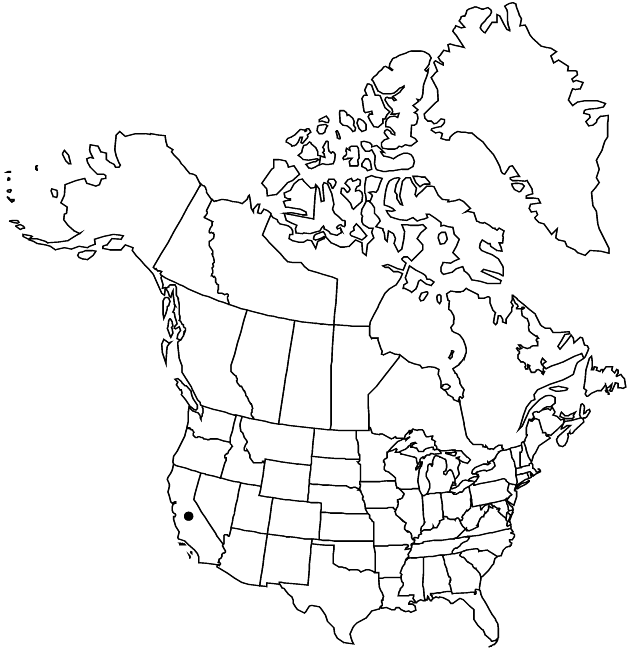Difference between revisions of "Ageratina shastensis"
Phytologia 45: 464. 1980.
FNA>Volume Importer |
imported>Volume Importer |
||
| (6 intermediate revisions by 2 users not shown) | |||
| Line 8: | Line 8: | ||
}} | }} | ||
|common_names=Mt. Shasta snakeroot | |common_names=Mt. Shasta snakeroot | ||
| − | |basionyms={{Treatment/ID/ | + | |special_status={{Treatment/ID/Special_status |
| + | |code=E | ||
| + | |label=Endemic | ||
| + | }} | ||
| + | |basionyms={{Treatment/ID/Basionym | ||
|name=Eupatorium shastense | |name=Eupatorium shastense | ||
|authority=D. W. Taylor & Stebbins | |authority=D. W. Taylor & Stebbins | ||
| + | |rank=species | ||
| + | |publication_title=Madroño | ||
| + | |publication_place=25: 218, fig. 1. 1978 | ||
}} | }} | ||
|synonyms= | |synonyms= | ||
| Line 27: | Line 34: | ||
|elevation=400–1800 m | |elevation=400–1800 m | ||
|distribution=Calif. | |distribution=Calif. | ||
| − | |discussion=<p>Ageratina shastensis is recognized by relatively large solitary heads and coarsely serrate, subcoriaceous leaves alternate on distal parts of stems.</p> | + | |discussion=<p><i>Ageratina shastensis</i> is recognized by relatively large solitary heads and coarsely serrate, subcoriaceous leaves alternate on distal parts of stems.</p> |
|tables= | |tables= | ||
|references= | |references= | ||
| Line 36: | Line 43: | ||
-->{{#Taxon: | -->{{#Taxon: | ||
name=Ageratina shastensis | name=Ageratina shastensis | ||
| − | |||
|authority=(D. W. Taylor & Stebbins) R. M. King & H. Robinson | |authority=(D. W. Taylor & Stebbins) R. M. King & H. Robinson | ||
|rank=species | |rank=species | ||
| Line 50: | Line 56: | ||
|publication title=Phytologia | |publication title=Phytologia | ||
|publication year=1980 | |publication year=1980 | ||
| − | |special status= | + | |special status=Endemic |
| − | |source xml=https:// | + | |source xml=https://bitbucket.org/aafc-mbb/fna-data-curation/src/2e0870ddd59836b60bcf96646a41e87ea5a5943a/coarse_grained_fna_xml/V19-20-21/V21_1403.xml |
|tribe=Asteraceae tribe Eupatorieae | |tribe=Asteraceae tribe Eupatorieae | ||
|genus=Ageratina | |genus=Ageratina | ||
Latest revision as of 20:10, 5 November 2020
Perennials, 15–45 cm (bases woody, enlarged, occasionally rhizomatous). Stems erect (clustered from bases), puberulent to pubescent (often with some glandular hairs distally). Leaves opposite proximally, alternate on at least distal 1/2 of stems; petioles 4–6 mm; blades (venation raised-reticulate) orbiculate (juvenile) or deltate-ovate, 1.5–3 × 1–2 cm, (subcoriaceous) bases obtuse to truncate, margins entire or coarsely serrate to dentate, apices acute to acuminate, abaxial faces ± gland-dotted and/or stipitate-glandular. Heads mostly borne singly (each often subtended by a leaflike bract). Peduncles (0–)2–15 mm, puberulent and stipitate-glandular. Involucres 10–11 mm. Phyllaries: apices acute, abaxial faces sparsely puberulent. Corollas white, glabrous. Cypselae hispidulous. 2n = 34.
Phenology: Flowering Jun–Oct.
Habitat: Cracks and crevices of nearly vertical limestone cliffs
Elevation: 400–1800 m
Discussion
Ageratina shastensis is recognized by relatively large solitary heads and coarsely serrate, subcoriaceous leaves alternate on distal parts of stems.
Selected References
None.
